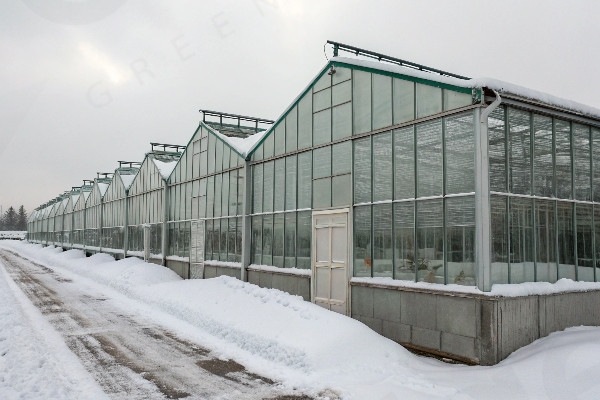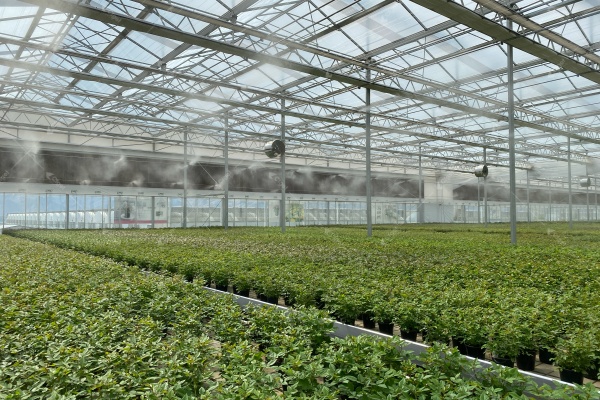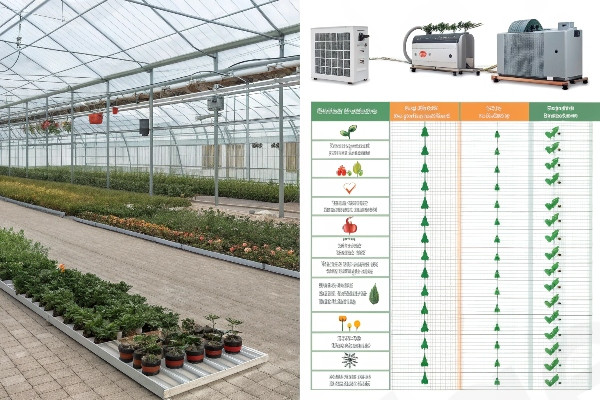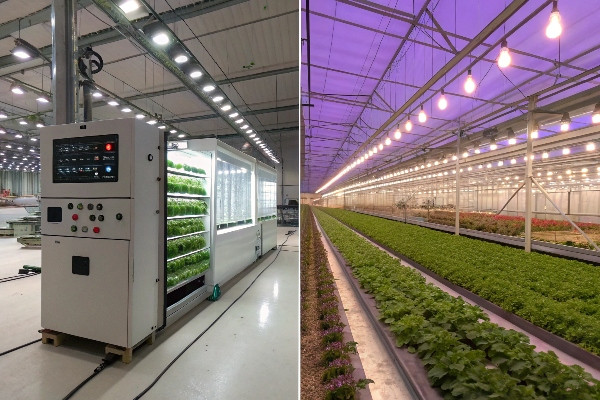Feeling the pressure of changing climates and resource limits on your farm? You want sustainable practices but worry about complexity and cost. Achieving a truly green future feels challenging.
Yes, smart greenhouses play a crucial role in a greener future. They use technology to precisely control growing conditions, significantly reducing resource use like water and energy, minimizing waste, and enabling sustainable food production year-round, regardless of external climate.
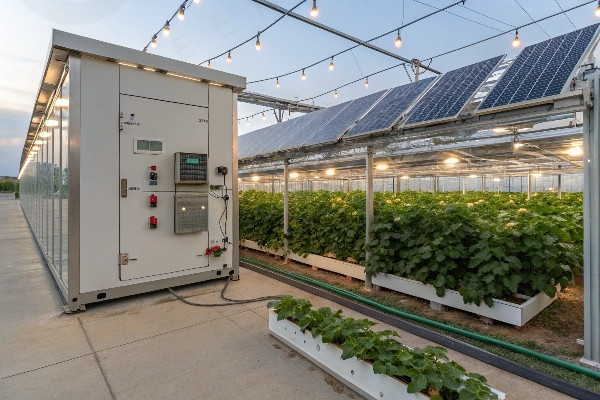
We all understand the basic idea of a greenhouse – extending the growing season, protecting plants. But the agricultural world is changing fast. We face unstable weather, water shortages, and a growing need for more food produced sustainably. This is where "smart" greenhouses come in. They represent a significant leap forward, moving beyond simple protection to active, optimized environmental management. In my 28 years with CFGET, I’ve seen firsthand how integrating technology transforms traditional greenhouses into powerful tools for sustainable agriculture, addressing many of the modern challenges growers face across Southeast Asia, Europe, America, and Central Asia.
Don’t miss out: ——Everything about intelligent greenhouse systems
Choosing the Right Smart Greenhouse System: What Factors Should You Consider?
Overwhelmed by the options for smart greenhouse systems? Choosing incorrectly could mean wasted investment and unmet sustainability goals. Finding the perfect fit seems complicated.
Selecting the right smart greenhouse involves matching technology to your specific needs. Key factors include your local climate, crop requirements, budget, desired automation level, scalability potential, and the availability of reliable technical support. A thorough evaluation ensures optimal performance and return on investment.
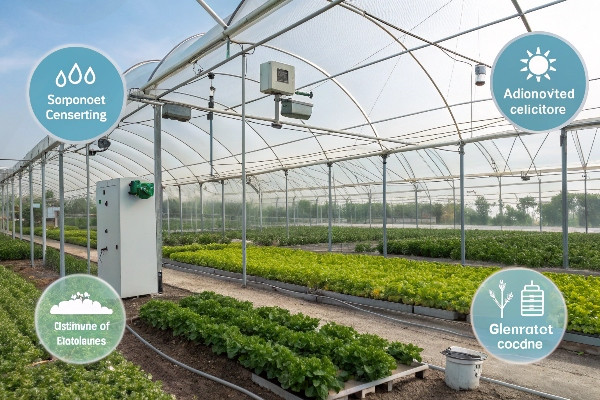
Choosing a smart greenhouse isn’t just about buying the latest technology. It’s about finding the right technology for your specific situation. I’ve worked with growers from the humid tropics of Southeast Asia to the harsh winters and hot summers of Central Asia, and the needs vary dramatically. A system perfect for a tomato grower in the Netherlands might be overkill or unsuitable for a leafy greens producer in Thailand.
Think about your environment first.
- Climate: Is your main challenge extreme heat, cold, humidity, or maybe strong winds? This dictates the type of structure, ventilation, heating, cooling, and dehumidification systems needed. For instance, our clients in Central Asia often prioritize robust structures and efficient heating, while those in Southeast Asia need excellent ventilation and humidity control.
- Crop Specifics: What are you growing? Different plants have different optimal conditions for temperature, humidity, light, and CO2. A system designed for orchids will differ from one for bell peppers. Precision matters.
- Automation Level: How "smart" do you need it to be? Basic smart systems might automate ventilation and irrigation based on simple timers or sensors. Advanced systems, like many we install at CFGET, integrate data from indoor sensors (temperature, humidity, CO2, light PAR) and outdoor weather stations (light, wind, rain). This data feeds into software that makes real-time adjustments to multiple systems – heating, cooling, vents, screens, lights, irrigation, fertigation – creating a precisely controlled environment. This involves what we call intelligent control, using strategies from simple timing to complex sensor-driven algorithms adjusting everything from temperature to humidity. The level of intelligence really depends on the extent of the electrical systems and sensors you integrate.
- Budget and ROI: Smart systems require investment. You need to balance the upfront cost against the expected long-term benefits: resource savings (water, energy, fertilizer, pesticides), increased yield, improved quality, and reduced labor. We help clients calculate this return on investment based on their specific circumstances.
- Scalability: Will your operation grow? Choose a system that can be expanded or upgraded later without needing a complete overhaul. Modular designs are often beneficial.
- Support and Training: Technology is only as good as your ability to use and maintain it. Reliable technical support and training are crucial. This is especially important in regions where specialized expertise might be less common. We pride ourselves on providing ongoing support to our global partners.
Here’s a simple table outlining some core considerations:
| Factor | Key Questions | Considerations for Different Regions | CFGET Approach |
|---|---|---|---|
| Climate | What are the typical and extreme weather conditions? Humidity levels? | SE Asia: High humidity, heat. Europe/America: Variable, seasonal. C. Asia: Extremes. | Customizable structures, ventilation, heating/cooling tailored to region. |
| Crop | What are the ideal environmental parameters? Sensitivity to changes? | Universal: Specific needs vary greatly. | Precise control systems (temp, humidity, light, CO2) matched to crop. |
| Automation | Timer-based or fully sensor-integrated? Remote monitoring needed? | Depends on grower’s tech comfort & labor availability. | Scalable automation levels, from basic timing to advanced sensor networks. |
| Budget | What is the upfront capital? What are the expected operational savings? | Varies greatly by client type (agent, grower, research). | Focus on cost-effectiveness and clear ROI analysis. |
| Support | Is local technical expertise available? What training is provided? | C. Asia: Need for rapid response. SE Asia: Installation ease. Eu/Am: Integration. | Global network, comprehensive training, remote diagnostics, local partners. |
I remember working with a grower in a region with unpredictable spring frosts. They were hesitant about the cost of a fully automated heating system. We analyzed their specific risk, potential crop loss value, and the energy efficiency of our proposed system. The analysis showed a clear payback period of just two seasons, giving them the confidence to invest. Choosing wisely is about informed decisions based on your unique context. Not every greenhouse needs to be fully smart, but adding the right intelligent control systems can transform its efficiency and sustainability.
Reducing Water Usage and Waste: Are There Significant Environmental Benefits with Smart Greenhouses?
Worried about high water consumption and fertilizer runoff impacting the environment? Traditional farming methods can be resource-intensive. You need a way to grow more with less environmental cost.
Yes, smart greenhouses offer substantial environmental benefits, primarily through drastic reductions in water usage and waste. Technologies like closed-loop hydroponics, precise sensor-based irrigation, and rainwater harvesting can cut water consumption by up to 90% compared to open-field agriculture.

Water conservation is becoming critical everywhere, and agriculture is a major water user. This is where smart greenhouses truly shine from an environmental perspective. In my years designing and implementing these systems, the efficiency gains we achieve are consistently impressive. We’re not just talking small percentages; the savings can be dramatic.
How do smart greenhouses achieve this?
- Targeted Irrigation: Instead of flooding fields or using imprecise sprinklers, smart greenhouses use methods like drip irrigation or Nutrient Film Technique (NFT) hydroponics. Water (mixed with nutrients) is delivered directly to the plant roots in precise amounts, exactly when needed. Sensors monitoring substrate moisture or drain water volume ensure plants get what they require without excess.
- Recirculation Systems: Many hydroponic and aeroponic systems in smart greenhouses are "closed-loop." This means any water and nutrients not absorbed by the plants are collected, filtered, sterilized (often using UV light), and then recirculated back into the system. This dramatically reduces both water consumption and fertilizer runoff, which is a major environmental pollutant. I’ve seen systems where water use is cut by 90-95% compared to traditional field farming for the same crop yield.
- Controlled Environment = Less Evaporation: Because the greenhouse environment is enclosed and humidity can be managed, less water is lost to evaporation compared to open fields, especially in hot or windy climates. While ventilation is necessary, managing it intelligently minimizes unnecessary water vapor loss.
- Rainwater Harvesting: Greenhouse roofs provide a large surface area perfect for collecting rainwater. This water can be stored and used for irrigation, reducing reliance on municipal water sources or groundwater extraction, especially crucial in water-scarce regions. We often integrate rainwater collection and storage into our greenhouse designs.
- Reduced Pesticide Use: The controlled environment of a greenhouse significantly reduces pest and disease pressure. Combined with Integrated Pest Management (IPM) strategies, this means far less reliance on chemical pesticides and herbicides, further protecting water sources and ecosystems from chemical runoff. Our European and American clients, in particular, emphasize this aspect due to strict regulations and consumer demand for cleaner produce.
Consider the impact:
| Feature | Mechanism | Environmental Benefit | Relevance to Regions |
|---|---|---|---|
| Precision Irrigation | Drip, NFT, Aeroponics deliver water directly to roots based on sensor data. | Minimizes water waste, reduces leaching. | High value globally, especially in arid/semi-arid areas (C. Asia). |
| Water Recirculation | Collect, treat, and reuse drain water in closed-loop systems. | Drastically cuts water & fertilizer use, prevents runoff. | Crucial for sustainability goals (Europe/America), water saving. |
| Humidity Control | Sensors and automated ventilation/fogging manage air moisture. | Reduces transpirational water loss from plants. | Important in hot climates (SE Asia, parts of C. Asia, Americas). |
| Rainwater Harvesting | Collect and store rainwater from the roof. | Reduces reliance on external water sources. | Beneficial everywhere, especially areas with water restrictions. |
| Integrated Pest Mgmt | Controlled environment limits pests; use biological controls. | Significantly reduces pesticide/herbicide use and runoff. | Key for organic/sustainable certification (Europe/America). |
A client operating in a drought-prone area was struggling with water restrictions. By transitioning to a smart greenhouse with a recirculating hydroponic system we designed, they not only maintained production but actually increased yields while cutting their water usage per kilogram of produce by nearly 85%. This wasn’t just good for their bottom line; it was essential for the sustainability of their business and the local environment. These aren’t just theoretical benefits; they are tangible results we see consistently.
Smart Greenhouses and Food Security: Can They Address Global Challenges?
Facing inconsistent yields due to weather extremes? Concerned about long supply chains and local food availability? Ensuring a stable, local food supply is a growing global challenge.
Yes, smart greenhouses significantly contribute to food security. They enable reliable, year-round crop production regardless of external climate conditions, support local farming initiatives reducing food miles, and maximize yields in smaller areas, helping to meet the demands of a growing global population.

Food security is a complex issue with many facets – availability, access, utilization, and stability. Smart greenhouses offer powerful solutions on several of these fronts. Based on my experience working on projects worldwide, their impact, particularly in challenging environments or densely populated areas, is undeniable.
Here’s how they help:
- Climate Resilience and Year-Round Production: This is perhaps the most significant contribution. Traditional agriculture is vulnerable to droughts, floods, frosts, heatwaves, and storms – all becoming more frequent with climate change. Smart greenhouses create a controlled bubble, shielding crops from these extremes. Temperature, humidity, and light are managed optimally, allowing for consistent, year-round production. This stabilizes supply, overcoming seasonal limitations and weather-related crop failures. I remember visiting a project in a region with very short growing seasons; the smart greenhouse we helped install provided fresh vegetables throughout the harsh winter, making a huge difference to local availability.
- Local Production and Reduced Food Miles: Smart greenhouses can be established almost anywhere – urban rooftops, peri-urban areas, remote communities, regions with poor soil or water scarcity. This facilitates local food production, drastically reducing the need for long-distance transportation. Shorter supply chains mean fresher produce, lower transportation costs and emissions, and reduced post-harvest losses. This resonates strongly with clients focused on sustainability and community-supported agriculture.
- Increased Yields and Land Use Efficiency: By optimizing growing conditions and often using vertical farming techniques or high-density planting methods like hydroponics, smart greenhouses can produce significantly higher yields per unit area compared to open-field farming. This is crucial as arable land becomes scarcer due to urbanization and land degradation. Producing more food on less land frees up space for other uses or ecosystem restoration.
- Resource Efficiency: As discussed earlier, the efficient use of water and nutrients means high productivity even in resource-poor regions. This ability to produce food with minimal inputs is vital for sustainable food security in many parts of the world, including areas our clients operate in across Central Asia and parts of Southeast Asia.
- Consistency and Quality: The controlled environment not only boosts yield but also improves the consistency and quality of the produce. This predictability is important for growers supplying retail markets or processors.
Let’s look at the specific contributions:
| Contribution | How Smart Greenhouses Help | Impact on Food Security | Example Application |
|---|---|---|---|
| Climate Resilience | Protect crops from weather extremes, enable year-round growing. | Ensures stable supply despite climate change. | Growing tomatoes year-round in Canada or leafy greens in Middle East deserts. |
| Local Production | Can be built near population centers, reducing transport needs. | Increases local availability, reduces food miles & waste. | Urban farms supplying restaurants and communities; projects in remote areas. |
| Yield Intensification | Optimized conditions & techniques (hydroponics, vertical) boost output per square meter. | Produces more food on less land, increases efficiency. | High-value crops like strawberries or herbs grown intensively near markets. |
| Resource Efficiency | Drastically reduces water/nutrient use compared to field agriculture. | Enables food production in resource-scarce regions. | Vegetable production in arid regions of Central Asia using minimal water. |
| Predictable Output | Consistent environmental control leads to reliable yields and quality. | Stabilizes market supply and grower income. | Supplying supermarkets with consistent quality produce meeting specific standards. |
The potential to deploy these systems quickly, as needed by some of our Southeast Asian partners, also means they can be part of rapid responses to food shortages or disruptions. While not a single solution to all food security issues, smart greenhouses are undeniably a powerful tool in building more resilient, sustainable, and localized food systems globally.
How do Smart Greenhouses Improve Crop Yields and Simplify Farm Management through Data-Driven Insights?
Struggling with optimizing crop yields? Finding farm management tasks complex and time-consuming? You need ways to boost productivity and streamline operations effectively.
Smart greenhouses1 improve yields by providing optimal, consistent growing conditions tailored to specific crops using sensor data. They simplify management through automation and remote monitoring, allowing data-driven decisions2 for irrigation, fertilization, climate control, and labor allocation, reducing guesswork and manual effort.
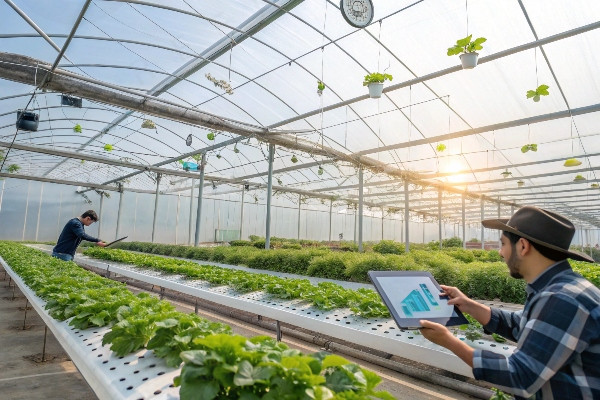
This is where the "smart" aspect really comes into play, moving beyond simple automation to intelligent optimization. It’s about using data to understand exactly what plants need and providing it precisely when they need it, while also making the entire operation easier to manage. Over my career at CFGET, I’ve seen growers transform their operations using these insights.
Let’s break down how this works based on the core concept: sensors feeding data to control systems via software.
- Optimized Growing Conditions = Higher Yields: Smart greenhouses are equipped with various sensors monitoring key environmental factors:
- Inside: Temperature, humidity, CO2 levels, Photosynthetically Active Radiation (PAR light), substrate moisture, water EC (Electrical Conductivity) and pH. Sensors can be placed in different zones to account for variations within a large greenhouse.
- Outside: A weather station monitors ambient temperature, humidity, wind speed/direction, solar radiation, and rainfall.
This constant stream of data is analyzed by the control software. You, the grower, set the desired parameters for your specific crop – the ideal temperature range, humidity levels, CO2 concentration, light intensity, watering schedule, nutrient mix, etc. The software then automatically adjusts the greenhouse systems to maintain these optimal conditions. - If temperature drops, heaters turn on.
- If humidity rises, vents open or dehumidifiers activate.
- If CO2 dips during peak photosynthesis, CO2 is supplemented.
- If light levels are low, supplemental lighting activates.
- If the substrate dries out, irrigation starts.
By consistently keeping the environment within the ideal range, plant stress is minimized, photosynthesis is maximized, and resources are used efficiently, leading directly to higher yields and better quality produce compared to less controlled environments.
- Data-Driven Insights for Simplified Management: The data collected isn’t just for automation; it’s a powerful management tool.
- Informed Decisions: Instead of guessing when to water or ventilate, you make decisions based on real-time data and historical trends. The software can provide dashboards, graphs, and reports showing how conditions have changed and how the systems have responded. This helps identify patterns, potential issues, and areas for further optimization. For example, analyzing CO2 usage patterns might suggest adjusting ventilation strategies to conserve CO2.
- Remote Monitoring and Control: Most modern smart greenhouse systems allow remote access via computer or smartphone. You can check conditions, receive alerts for potential problems (e.g., temperature out of range, system malfunction), and even make adjustments from anywhere with an internet connection. This drastically reduces the need for constant physical presence and allows for quicker responses to issues. I recall a client who averted a major crop loss by receiving an alert about a heating system failure while away and being able to contact local staff immediately.
- Precise Resource Management: Data logs track water, fertilizer, and energy consumption. This allows for accurate cost analysis and helps identify opportunities for efficiency improvements. You can fine-tune nutrient recipes based on plant uptake data derived from EC and pH monitoring of the drain water in hydroponic systems.
- Optimized Labor: Automation handles many routine tasks like ventilation, irrigation, and climate adjustments, freeing up farm labor for more skilled tasks like pruning, harvesting, and pest scouting. Data can also help schedule tasks more efficiently.
- Predictive Capabilities: Advanced systems can start using historical data and predictive algorithms (often based on weather forecasts) to anticipate changes and adjust systems proactively. For instance, pre-cooling the greenhouse before an expected heatwave or adjusting lighting based on predicted cloud cover.
CFGET’s intelligent control systems embody these principles. We offer different levels of control, from timer-based sequences to sophisticated, sensor-driven strategies that manage multiple interacting systems.
Here’s a glimpse at how sensors translate to action:
| Sensor Type | Data Measured | Automated Action Triggered (Examples) | Management Insight Gained |
|---|---|---|---|
| Temperature | Air temp (inside/outside) | Open/close vents, activate heating/cooling/shading screens | Energy consumption patterns, optimal setpoints for crop stage. |
| Humidity | Relative Humidity (RH) | Open/close vents, activate fogging/dehumidification systems | Disease pressure risk (e.g., high RH), transpiration rates. |
| CO2 | Carbon Dioxide concentration | Inject CO2 (enrichment), adjust ventilation rates | Photosynthesis efficiency, cost-benefit of CO2 enrichment. |
| Light (PAR) | Photosynthetically Active Rad. | Turn supplemental lights on/off, deploy/retract shade screens | Daily Light Integral (DLI) achieved, lighting energy use. |
| Substrate Moisture | Water content in growing medium | Start/stop irrigation cycles | Plant water uptake rates, irrigation efficiency. |
| EC / pH | Nutrient concentration / Acidity | Adjust fertilizer injectors (fertigation), trigger fresh water flush | Plant nutrient uptake, fertilizer recipe effectiveness, water quality. |
| Weather Station | External conditions | Pre-emptive adjustments (e.g., close vents for rain/wind), forecasts | Inform internal setpoints, predict heating/cooling needs. |
Essentially, smart greenhouses take the guesswork out of farming. By leveraging data, they empower growers to achieve higher yields more consistently while simultaneously simplifying the complex task of managing a modern agricultural operation. It’s about working smarter, not just harder.
Conclusion
Smart greenhouses are vital for sustainable agriculture’s future. They boost yields, drastically cut resource waste, enhance food security, and simplify farming through intelligent, data-driven control, paving the way for greener practices globally.

